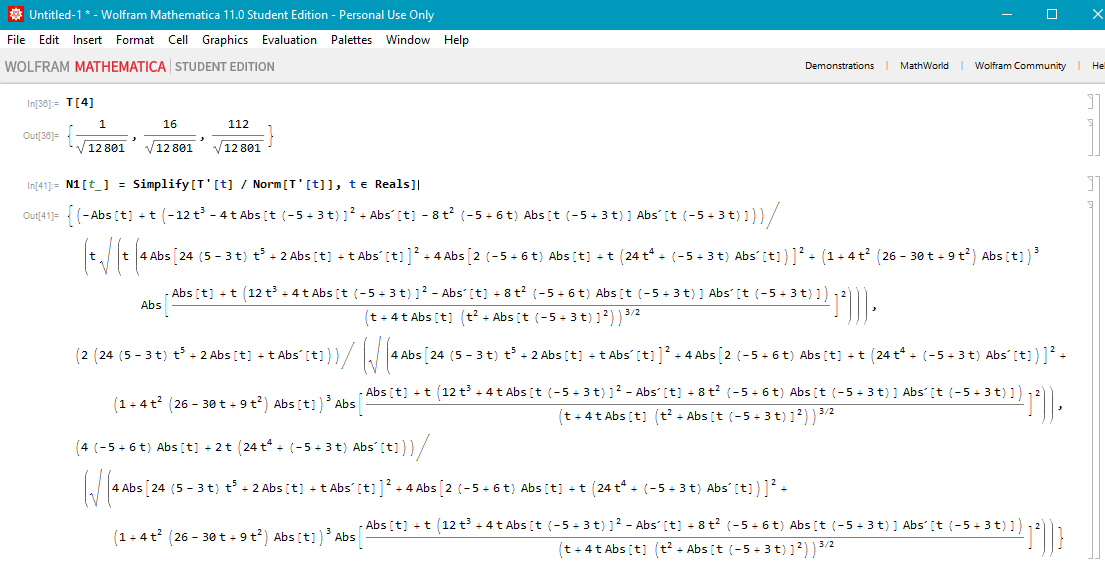For my Calc III class, I need to find $T(t)$, $N(t)$, and $k(t)$ using Mathematica, given $r(t) = {sqrt(t), (1/2)t^2, t^3 - (5/2)t^2 - 17}$. While the former and latter have been found, attempting to use the same method used to get $T(t)$ in order to find $N(t)$ has had... messy results, as seen in the following image.
 (If the image doesn't show, it is basically an eight line mess full of
(If the image doesn't show, it is basically an eight line mess full of Abs.
The code used is:
N1[t_] = Simplify[T'[t] / Norm[T'[t]], t ∈ Reals]
By hand, it starts getting ridiculously nasty around $||T'(t)||$, and I can't even begin to figure out $N(t)$, so I couldn't tell you if the result given is even remotely correct. What Mathematica gave me for $T(t)$ matched up with what I got by hand, so I know that, at the very least, Mathematica got that right or otherwise as wrong as I have.
I've tried doing a Google search for anything that could help compute $N(t)$, but nothing has proven useful.
For $T(t)$, I have gotten the following:

T(t) = {1 / sqrt(t) sqrt((1/t)(4t^3((3t - 5)^2 + 1) + 1)), 2t / sqrt((1/t)(4t^3((3t - 5)^2 + 1) + 1)), 2t(3t - 5) / sqrt((1/t)(4t^3((3t - 5)^2 + 1) + 1))}
(I apologize if the formatting is nasty; I've never really done this before, so I don't know how to properly clean it up.)

Norm[]altogether:Simplify[T'[t]/Sqrt[T'[t].T'[t]]]. You might be interested in looking atFrenetSerretSystem[], too. $\endgroup$Abs. $\endgroup$Simplify[r'[t]/Sqrt[r'[t].r'[t]]]. Make sure to clear all variables before trying all of these. $\endgroup$